Canada helps with historic space mission to asteroid Bennu
Written by Christine Tovee, Aerospace Engineer/Technology Leader, ROM Volunteer
With two days until lift-off, the countdown for the OSIRIS-REx mission is ticking away and a team led by the Canadian Space Agency has an important sensor payload on board for the trip. On September 8th, 2016, NASA will be launching the OSIRIS-REx probe from Cape Canaveral with the aim of a rendezvous with Bennu, a Near Earth Object (NEO) asteroid two years later. The mission will help scientists investigate how planets formed, tell us about the origins of some of the building blocks of life, as well as improve our understanding of asteroids that could impact Earth.
Once in orbit with the asteroid, OSIRIS-REx will analyze the asteroid’s surface features over an extended period. Then, in a daring flight maneuver, the probe will touchdown and scoop up a sample of Bennu’s terrain before flying away again. OSIRIS-REx will complete its mission by returning the sample to Earth for analysis. This will be the largest extraterrestrial sample return mission since the lunar Apollo missions!
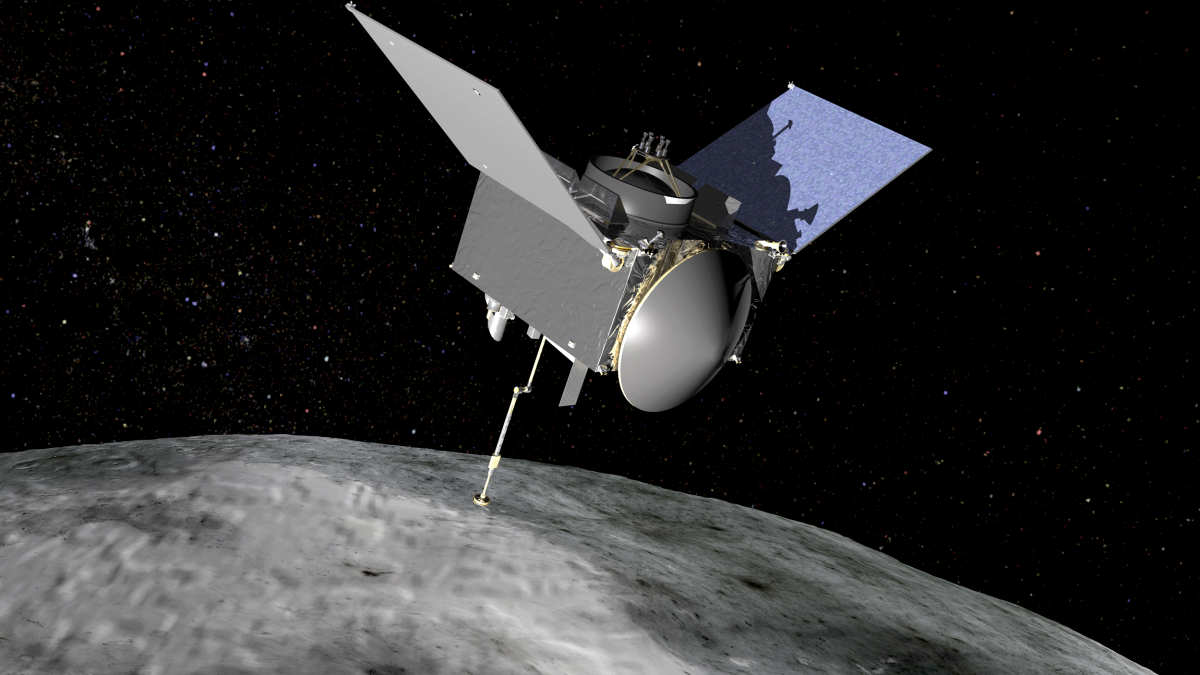
Caption: Artist’s conception of the OSIRIS-REx spacecraft with robotic arm extended at Bennu. The spacecraft will bring at least a 60 gram sample back to Earth for study. Credit NASA/GSFC
Bennu was selected as the destination for the OSIRIS-REx mission from about 500,000 asteroids in the Solar System - pretty stiff competition! The scientists and engineers were searching for an asteroid with a carbon rich composition, of a size greater than 200 m, and on an orbital path that would bring it close to Earth.
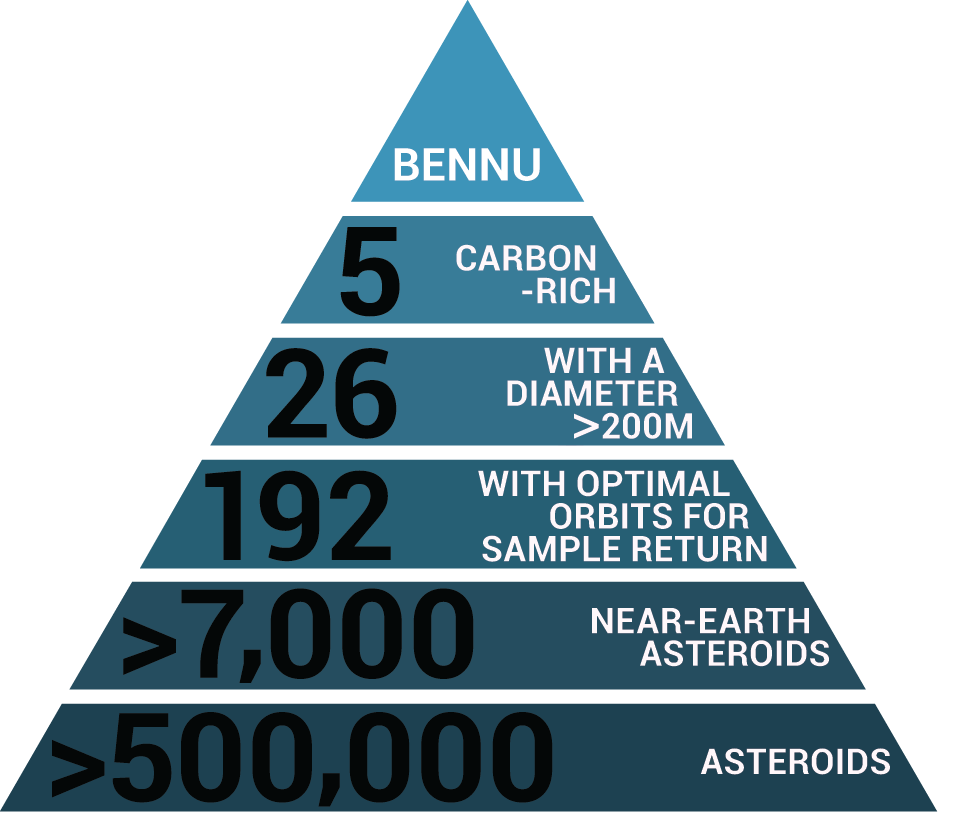
Caption: Criteria for choosing asteroid Bennu as the target for the OSIRIS-REx mission. Credit: University of Arizona
Bennu is about 500 m in diameter, taller than the SkyPod of the CN Tower. Scientist believe that Bennu has carbon material in its makeup. Therefore, on top of studying the geology of the early Solar System, analysis of the returned samples may reveal clues to the potential origins of life on Earth.
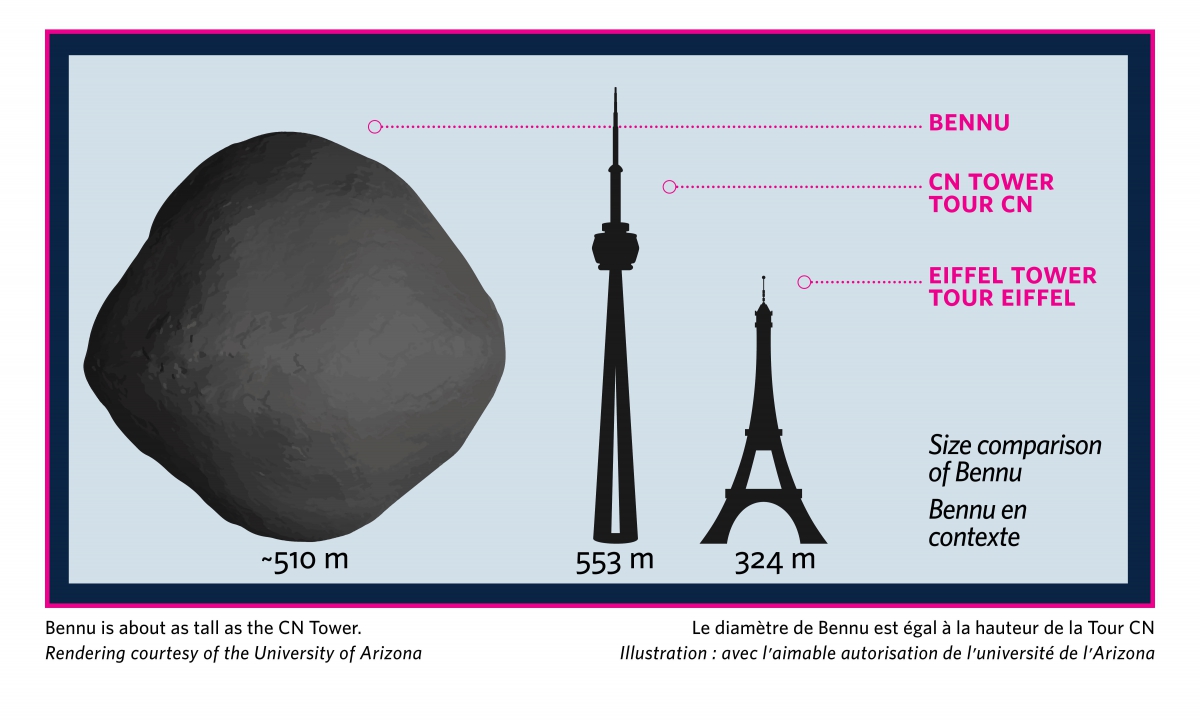
This is the first time Canada will participate in an asteroid return space mission. The Canadian team is led by OLA instrument scientist, Dr. Michael Daly from York University. Previous experience on Canada’s Mars Phoenix Rover team has provided the foundation for OLA. MacDonald Dettwiter and Associates (MDA) in Ontario has designed and manufactured OLA based on a previous sensor it created for the Mars Phoenix Rover mission. The Royal Ontario Museum, and the Universities of British Columbia, Calgary, Toronto and Winnipeg are collaborating on the project as well.
The Canadian Space Agency is contributing the OSIRIS-REx Laser Altimeter (OLA) - a key payload for the entire mission. OLA, is based on LIDAR technology. LIDAR uses laser pulses rather than radio waves (as in RADAR) to precisely measure distances. OLA will guide the probe’s navigation as it moves close to Bennu. Then most importantly, OLA will undertake a complete mapping of the asteroid’s surface. The topographic maps will also be used by scientists to select a set of potential landing sites for OSIRIS-REx as it swoops down to the surface for the ‘touch and go’.
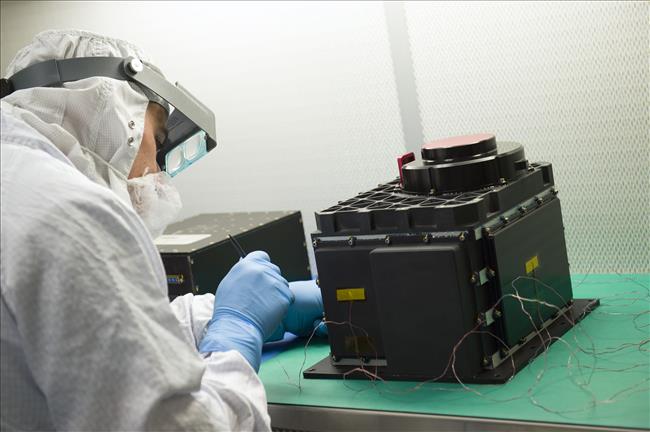
Caption: The OSIRIS-REx Laser Altimeter (OLA), contributed by the Canadian Space Agency (CSA), will create 3-D maps of asteroid Bennu to help the mission team select a sample collection site. Photo credit: NASA/Goddard/Debbie McCallum
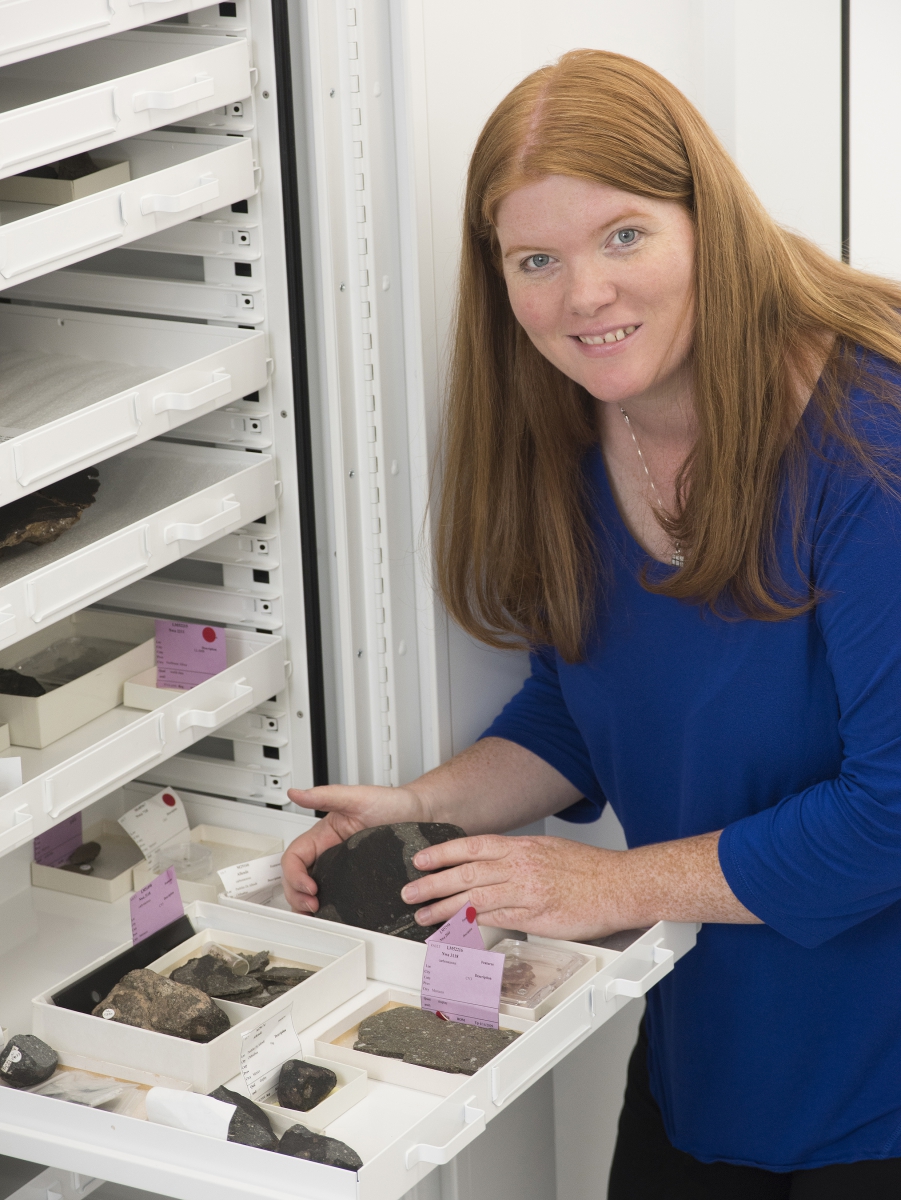 Six Canadian scientists, including the ROM’s Curator of Mineralogy, Dr. Kim Tait, are part of the OSIRIS-REx’s international scientific team. They aim to study Bennu’s topography and geology to better understand the earliest history of our solar system. As Dr. Tait explains,
Six Canadian scientists, including the ROM’s Curator of Mineralogy, Dr. Kim Tait, are part of the OSIRIS-REx’s international scientific team. They aim to study Bennu’s topography and geology to better understand the earliest history of our solar system. As Dr. Tait explains,
"Rocks from Bennu have literally been "frozen" in time, giving us a rare snapshot of the rock record from over 4.5 billion years ago, a time that we can't see in the rocks on Earth."
For its participation, Canada will receive 4% of the retrieved sample from Bennu. This material will support homegrown planetary science research. The samples will be tested by multiple methods including spectroscopy. The ROM is providing samples of its geological collection, both earthbound specimens and meteorites, to help hone the scientific procedures and provide baseline data for comparison. With this support from the ROM, Canadian scientists can maximize the use of what is a very precious sample of asteroid material.
For ROM Curator of Mineralogy, Dr. Kim Tait, Bennu represents a unique opportunity for learning about the early stages of the Earth’s formation.
“Scientifically, what we can learn from even small dust grains I could probably spend the rest of my career working on [Bennu].”
(top) Dr. Kim Tait, Teck Endowed Chair of Mineralogy, in new meteorite storage room at the ROM. Image credit: Royal Ontario Museum, Brian Boyle.
Learn more about the mission!
Now at the ROM
Be sure to check out our new Mission to Bennu display in the Teck Suite of Galleries on the second floor of the ROM.
Sept. 7 12:00 noon ROM Facebook Live discussion
Ryan Dodge will chat with Dr. Marianne Mader, ROM Managing Director of Earth & Space/Fossils & Evolution about the OSIRIS-REx mission. Tune into the ROM’s facebook page to learn about the mission and join in the excitement leading up to the launch!
Sept 13, 2016 Mission to Bennu Panel at the ROM
The Canadian Space Agency and the ROM are hosting a “Mission to Bennu” presentation and panel discussion with all the Canadian scientists about the OSIRIS-REx mission on September 13th, 2016 here at the museum. They will have just returned from witnessing the launch at Mission Control and will have the most up-to the minute news to share. Hope to see you there!
Sept. 21: OSIRIS-REx Special School Visit
Teachers – register your class for a special full-day event focused on NASA's OSIRIS-REx mission to the asteroid Bennu! This special school visit event will feature a talk from a mission scientist, exploration of the ROM’s OSIRIS-REx exhibition and the Teck Suite of Galleries, a face-to-camera encounter with a rover, and time in the ROM Makerspace to make personalized mission patches. Bring space exploration to your students!
https://www.rom.on.ca/school_visits/index.php?route=product/product&path=129&product_id=783
